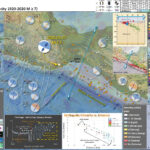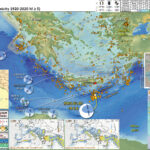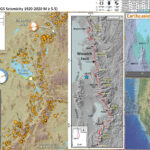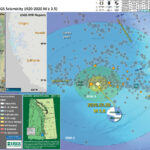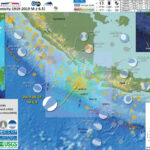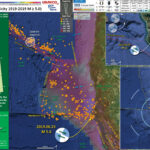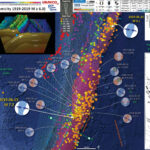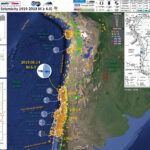I don’t always have the time to write a proper Earthquake Report. However, I prepare interpretive posters for these events. Because of this, I present Earthquake Report Lite. (but it is more than just water, like the adult beverage that…
Earthquake Report (and Tsunami) Oaxaca, Mexico
Well, it has been a busy couple of weeks. On 18 June, here was a M 7.4 earthquake in the Pacific plate along the Kermadec trench north of New Zealand which generated a small tsunami, even though it was a…
Earthquake Report: M 6.5 in Crete, Greece
Well, last weekend I was working on a house, so did not have the time to write this up until now. (2023 update: the magnitude is now M 6.5) https://earthquake.usgs.gov/earthquakes/eventpage/us700098qd/executive The eastern Mediterranean Sea region is dominated by plate tectonics…
Earthquake Report: Mendocino triple junction
Well, it was a big mag 5 day today, two magnitude 5+ earthquakes in the western USA on faults related to the same plate boundary! Crazy, right? The same plate boundary, about 800 miles away from each other, and their…
Earthquake Report: Salt Lake City
As I was waking up this morning, I rolled over to check my social media feed and moments earlier there was a good sized shaker in Salt Lake City, Utah. I immediately thought of my good friend Jennifer G. who…
Earthquake Report: Mendocino fault
I was in Humboldt County last week for the Redwood Coast Tsunami Work Group meeting. I stayed there working on my house that a previous tenant had left in quite a destroyed state (they moved in as friends of mine).…
Earthquake Report: Sunda Strait, Indonesia
Around the beginning of the month, I was helping get a fundraiser prepared for a weekend concert series (audio crew for load in and strike; stage manager during the show). So, I was away from the computers when there was…
Earthquake Report: Mendocino triple junction
Well, I was on the road for 1.5 days (work party for the Community Village at the Oregon Country Fair). As I was driving home, there was a magnitude M 5.6 earthquake in coastal northern California. https://earthquake.usgs.gov/earthquakes/eventpage/nc73201181/executive I didn’t realize…
Earthquake Report: Kermadec Trench
There was just an earthquake associated with the plate boundary that forms the Kermadec Trench, a deep oceanic trench that extends north from New Zealand, towards the Fiji Islands. https://earthquake.usgs.gov/earthquakes/eventpage/us6000417i/executive A minor tsunami (~25 cm in size) has been recorded…
Earthquake Report: Chile
This morning (my time) there was a magnitude M 6.4 earthquake offshore of Chile. While it was in the correct location to possibly cause a tsunami, the magnitude was too small. https://earthquake.usgs.gov/earthquakes/eventpage/us600040ja/executive The major plate boundary here is the megathrust…

